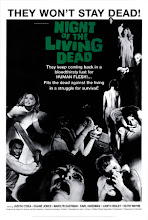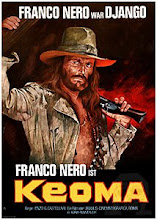 Gamera
Gameraaka Gammera The Invincible, Daikaijû Gamera, Giant Monster Gamera
Director Noriaki Yuasa Writer Nisan Takahashi
Cast Eiji Funakoshi (Dr. Hidaka), Harumi Kiritachi (Kyoke), Junichirô Yamashiko (Aoyagi), Michiko Sugata (Nobuyo)
 Tonight we travel to a parallel universe where the appearance of giant prehistoric monsters flattening cities are part of the daily routine. It’s the world of Godzilla, Rodan, Mothra Ghidrah and their kind - a strange world, and one made even stranger by the appearance of an unidentified flying turtle called Gamera.
Tonight we travel to a parallel universe where the appearance of giant prehistoric monsters flattening cities are part of the daily routine. It’s the world of Godzilla, Rodan, Mothra Ghidrah and their kind - a strange world, and one made even stranger by the appearance of an unidentified flying turtle called Gamera.
Forever in the shadow of the monolithic Toho Studios, second rung Daiei Studios were more famous for samurai sagas than monster movies. In the mid 60s they decided to join the giant reptile race and designed a rival monster series to Toho’s mammothly successful Godzilla. They wisely chose Gamera as their flagship - a giant turtle that shoots flames from between its snaggleteeth, and spins through the air by shooting flames through its shell’s feetholes (and at one point you almost see the paper mache shell catch fire!).
 The first Gamera film “Gamera The Invincible” (as it was sold to the
The first Gamera film “Gamera The Invincible” (as it was sold to the
 Kenny: Gamera saved me, didn’t he?
Kenny: Gamera saved me, didn’t he?
Dr Hidaka: Yes. Gamera saved your life.
Kenny: Because he knows I like turtles.
Mother: Gamera likes you. Gamera must have a good heart.
Kenny: Yes. Gamera is a GOOD turtle.
Mother: He is good. He IS good.
Dr Hidaka: (laughs) Yes, he is.
 Released in 1965, Gamera was a surprising hit. The annoying infantile anthropomorphism actually worked on kiddie audiences in both
Released in 1965, Gamera was a surprising hit. The annoying infantile anthropomorphism actually worked on kiddie audiences in both
aka Uchûjin Tôkyô Ni Arawaru, The Mysterious Satellite
Director Koji Shima Writer Hideo Oguni
Cast Keizo Kawasaki (Toru), Toyomi Karita (Hikari Aozora/Ginko), Bin Yagasawa (No. 2 Pairan), Shozo Nanbu (Dr Toro Isobe)
 Welcome back to our second Japanese science fiction feature, a much earlier tinfoil effort from Daiei Studios. Warning From Space, released in 1956 to capitalize on the success of Godzilla, has the honour of being the first Japanese space opera film in colour. It also features some of the most bizarre out-of-this-world creatures ever witnessed on Schlock Treatment - star creatures from the planet Paira who have giant eyes for belly buttons and look suspiciously like a cross between Tellytubbies and the KKK.
Welcome back to our second Japanese science fiction feature, a much earlier tinfoil effort from Daiei Studios. Warning From Space, released in 1956 to capitalize on the success of Godzilla, has the honour of being the first Japanese space opera film in colour. It also features some of the most bizarre out-of-this-world creatures ever witnessed on Schlock Treatment - star creatures from the planet Paira who have giant eyes for belly buttons and look suspiciously like a cross between Tellytubbies and the KKK.
Their spaceship hovers over
Son: The racquet?
Father: No! The girl!
 Her message is simple - Earth is on a collision course with the renegade Planet R and, as Planet Paira is dependent on the Earth’s gravitational pull, the fate of both planets are at stake. Dr Kamura’s plan is to use the earth’s stock of H-bombs to blast the planet out of existence, but the rest of the world won’t listen, and as Planet R dwarfs the Earth in its shadow, earthquakes and tidal waves split
Her message is simple - Earth is on a collision course with the renegade Planet R and, as Planet Paira is dependent on the Earth’s gravitational pull, the fate of both planets are at stake. Dr Kamura’s plan is to use the earth’s stock of H-bombs to blast the planet out of existence, but the rest of the world won’t listen, and as Planet R dwarfs the Earth in its shadow, earthquakes and tidal waves split
Interestingly, the A-bomb is seen as the potential saviour of























































































No comments:
Post a Comment